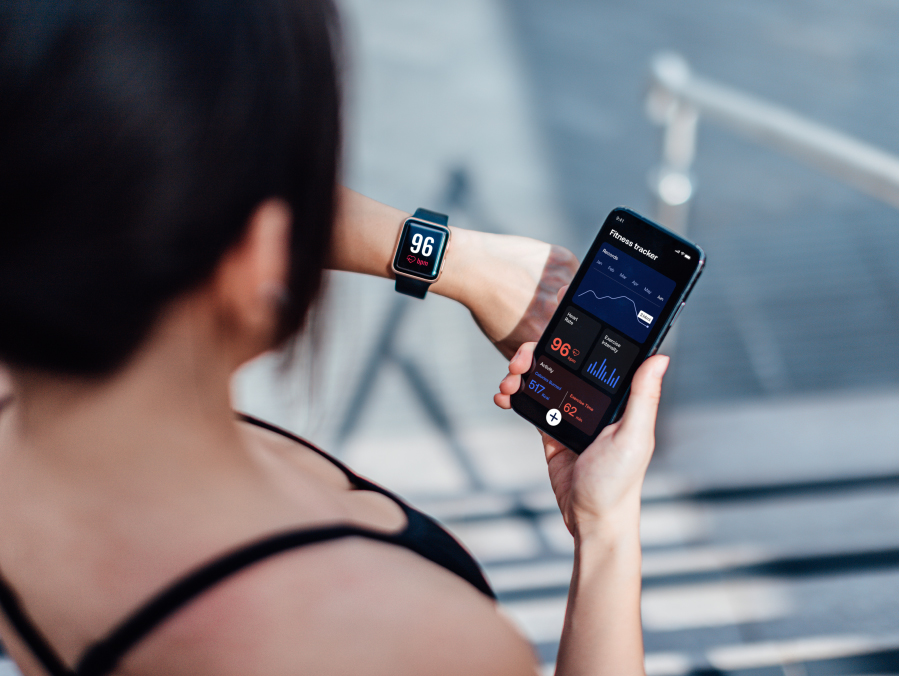Why are wearables important for marketers?
In the UK there are approximately 6 million people that own a wearable device, and it’s predicted that consumer wearable adoption will increase by 28% by 2022. That’s a substantial audience for brands to reach through wearables. With an acceleration on digital following the pandemic, consumers are more expectant than ever for brands to provide personalised, multichannel experiences.
Any marketer worth their salt knows that understanding your target audience is key to creating powerful campaigns that drive meaningful results. Whilst the internet and mobile devices have certainly opened up a pandora’s box of insights into consumer behaviour, wearables take it one step further by being attached, worn, on the consumer’s body. Wearable, smart technology can provide brands with a new level of insight from customers that can transform how they interact with audiences. In addition to this, wearable consumers are hungry for data and insights about themselves, with 45% of smartwatch/fitness tracker owners in the US and UK reporting that they enjoy looking at their data. Wearable audiences want to learn about themselves to empower them to make better choices. This is a huge opportunity for brands that want to put customers at the heart of their strategy, whilst benefiting their bottom line.
Adobe found that organisations with strong multi-channel engagement strategies have a 25% increase in close rates and see 10% Y-O-Y growth. Including wearables into your marketing strategy could be pivotal in reaching modern audiences and growing your brand.
It’s not just about watches
When we think of wearables, smartwatches are often the first thing to spring to mind, however there’s a lot more to this consumer electronics segment to boost customer loyalty.
As the population grows more health conscious and strives to take on responsibility for the environment, smart technology and the Internet of Things (IoT) is only set to become more popular. Whilst fitness trackers have been growing in demand over the last few years, features that monitor health and sleep patterns have become popular, with blood pressure (53%) and heart rate (51%) being the most used features for wearable owners in the UK and US according to Global Web Index.
Elevating customer experience
The digital era has opened the door to a higher standard of customer experience than what had come before it. New technology meant consumer expectations and brands had to ensure they’re at the forefront of innovation, or risk being left behind.
A key purchase driver for modern audiences, especially digital natives (anyone born from around 1983 onwards), is convenience. Customers expect brands to know them and be accessible to them whenever and however they want to engage with them. This means brands must constantly be reviewing their digital ecosystem to ensure they’re visible and active for their prospects and existing customers.
Wearables are the epitome of convenience. Firstly, they’re worn, they don’t have to be held, and can be taken wherever the user goes. They integrate with other important devices and channels, giving the user a completely seamless, immersive experience- for example, using your smartwatch to pay for something in store. They track metrics and offer alerts to help improve performance or well-being. Creating an app for your brand that’s compatible with popular wearable tech is a gateway for boosting your customers’ satisfaction, and perception of your brand.
Building trust with wearables
A recent customer study revealed that 75% of people won’t purchase from a business that they don’t trust with their data. With the changes to GDPR laws and various public scandals in recent years, data protection is a top priority for consumers. The Chartered Institute of Marketing (CIM) found that consumers are still anxious about how business use their information, with 57% stating they wouldn’t trust a brand to use their data appropriately. It’s on brands to provide this reassurance and to demonstrate that they have the correct measures in place to use personal data responsibly and securely. In doing so and then using the data to generate a better user experience they stand to build more trust, and in turn brand loyalty.
Building customer loyalty is like developing trust in any new relationship. Remember, your customers are human, and emotional connections generate the best results. The data collected from wearables is likely to be more personal, more intimate than other data digital marketers might look at. For example, metrics on how their body behaves or where they go throughout the day is far more intrusive than what keyword they searched for on their laptop. Using this insight and analysis well through contextual marketing has the potential to really enhance a user’s experience with your brand, building deeper, more trusting relationships.
80% of customers with an emotional connection to a brand will promote it to their friends and family. So, not only is this an opportunity for building customer loyalty, it’s a chance for advocacy which could turn into profit.
How is your brand building customer loyalty?
The best customer loyalty strategies are born from in-depth customer research. This approach should be ongoing and can accurately capture data and insights that drive sophisticated marketing solutions.
We are TrunkBBI, an award-winning, integrated marketing agency that helps brands achieve their goals through content-led performance marketing. Since 2011 we have been helping our clients stay ahead of the latest trends and digital tactics using a tried and tested framework. Contact us today to learn more about how we can help enhance your brand’s marketing to build profitable, meaningful relationships.


